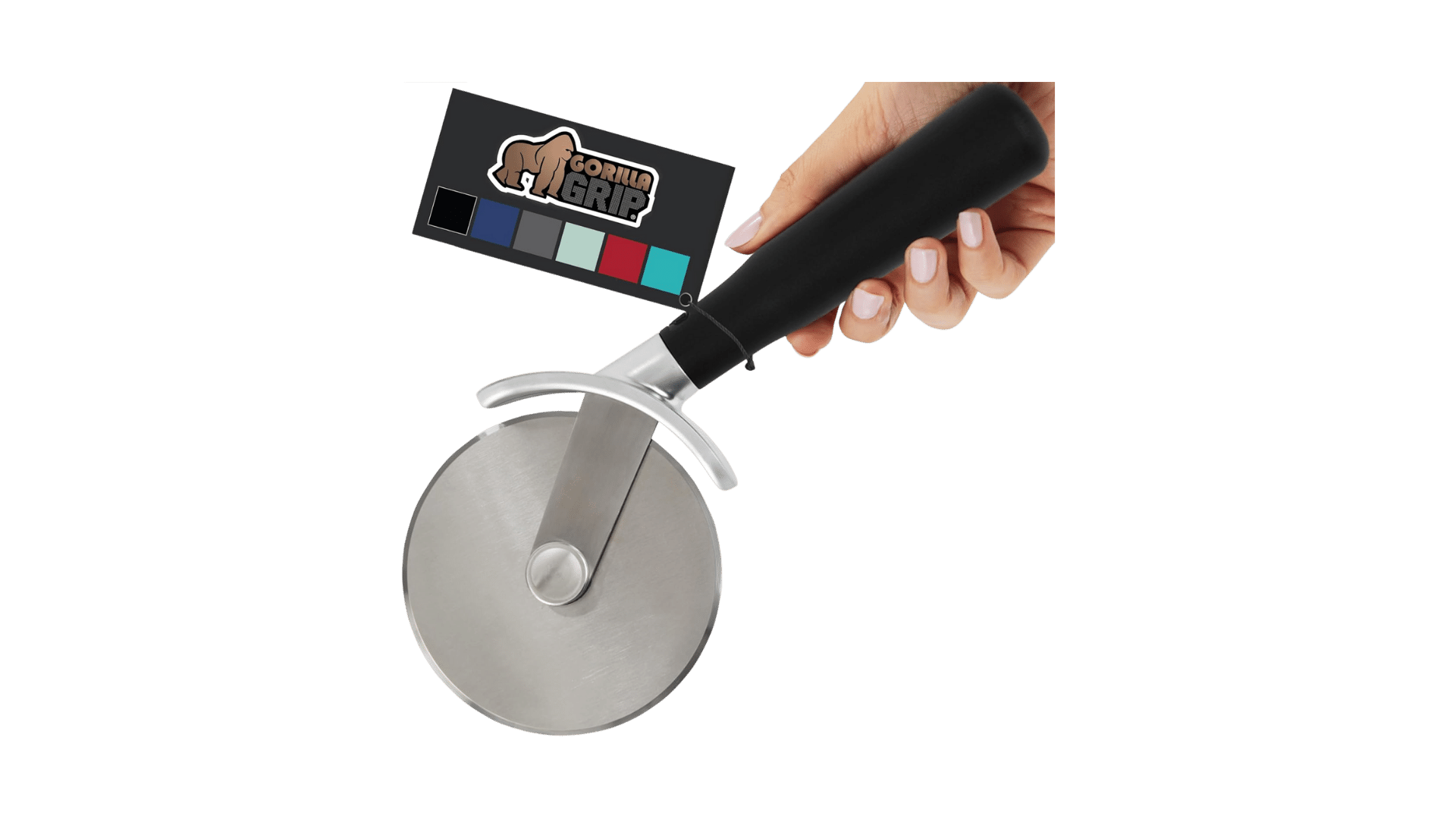
|
This post may contain affiliate links, which means that we may receive a commission if you make a purchase using these links. As an Amazon Associate, we earn commission from qualifying purchases.
A pizza cutter is an essential tool for anyone who loves making or eating pizza. The right pizza cutter can make slicing through a hot, cheesy pizza quick and easy, providing clean cuts without disturbing the toppings.
With various styles and features available, choosing the best pizza cutter can enhance your pizza experience.
In this guide, we’ll explore the key factors to consider when selecting the perfect pizza cutter for your kitchen.
Types of Pizza Cutters
There are several types of pizza cutters, each with its own advantages and specific uses. Understanding the differences can help you choose the best one for your needs.
– Wheel Cutters : The most common type, wheel cutters feature a rotating circular blade attached to a handle. They are easy to use and provide clean, straight cuts.
– Rocker Cutters : Rocker cutters have a long, curved blade with handles on both ends. They are rocked back and forth to slice the pizza and are great for cutting through thick or large pizzas.
– Scissor-Style Cutters : These cutters look like kitchen scissors but are specifically designed for pizza. They are ideal for precision cutting and can be used directly on baking sheets or pans.
Blade Material
The material of the blade is crucial for durability, sharpness, and ease of maintenance. The most common materials include:
– Stainless Steel : Known for its durability and resistance to rust and corrosion, stainless steel blades are sharp and easy to clean.
– Carbon Steel : These blades are extremely sharp and durable but require more maintenance to prevent rust.
– Ceramic : Ceramic blades stay sharp for a long time and are resistant to rust, but they can be more brittle and prone to chipping.
Blade Size and Sharpness
Blade size and sharpness significantly impact the cutter’s performance.
– Size: Wheel cutters typically come in various diameters, with larger wheels (around 4 inches) being better for thicker crusts and smaller wheels (around 2.5-3 inches) suited for thinner pizzas. Rocker cutters should be long enough to span the width of your pizza.
– Sharpness: A sharp blade ensures clean cuts and minimizes the risk of crushing the crust or dragging toppings. Look for blades that maintain their sharpness over time and are easy to sharpen if needed.
Handle Design and Comfort
A well-designed handle provides comfort and control, reducing the effort needed to cut through pizza.
– Ergonomic Design: Handles that are ergonomically designed reduce hand strain and provide a comfortable grip, especially for frequent use.
– Non-Slip Grip: Handles with a non-slip grip, often made from rubber or silicone, offer better control and safety, even when your hands are greasy or wet.
Safety Features
Safety features are important to consider to prevent accidents and injuries.
– Blade Guard: Some pizza cutters come with a blade guard or cover for safe storage, protecting both the blade and your hands.
– Locking Mechanism: For scissor-style cutters, a locking mechanism keeps the blades closed when not in use, preventing accidental cuts.
Ease of Cleaning
A pizza cutter that is easy to clean will save you time and effort.
– Dishwasher Safe: Many pizza cutters are dishwasher safe, making cleanup convenient. However, hand washing may be recommended for maintaining sharpness.
– Detachable Blade: Some wheel cutters have detachable blades, allowing for thorough cleaning and preventing food buildup.
Durability and Maintenance
Durability and ease of maintenance are essential for a long-lasting pizza cutter.
– Construction Quality: Look for cutters made from high-quality materials that withstand frequent use without dulling or breaking.
– Maintenance: Consider how easy it is to sharpen the blade or replace parts if needed. Some manufacturers offer replacement blades, extending the cutter’s lifespan.
Versatility
While primarily used for pizza, a versatile cutter can handle other tasks.
– Multi-Purpose Use: Some pizza cutters can be used to cut pastries, sandwiches, quesadillas, and more. Rocker cutters, in particular, can double as mincing tools for herbs and vegetables.
Brand Reputation and Warranty
Choosing a pizza cutter from a reputable brand can provide peace of mind regarding quality and performance.
– Reviews and Recommendations: Read customer reviews and seek recommendations to gauge the cutter’s performance and durability.
– Warranty: A good warranty ensures that any defects or issues can be addressed, providing added confidence in your purchase.
Budget Considerations
Set a budget based on your needs and preferences.
– Basic vs. Premium: Basic models are affordable and functional, while premium models may offer additional features, better materials, and longer warranties.
– Value for Money: Consider the overall value, balancing cost with quality, durability, and performance.
Conclusion
Choosing the best pizza cutter involves considering factors such as type, blade material, size and sharpness, handle design, safety features, ease of cleaning, durability, versatility, brand reputation, and budget.
By evaluating these factors, you can find a pizza cutter that meets your specific needs, ensuring perfect slices every time and enhancing your overall pizza experience.

0 Comments